Brownstone Institute
Governor Andrew Cuomo: From Hero to Goofball in One Seasonal Virus
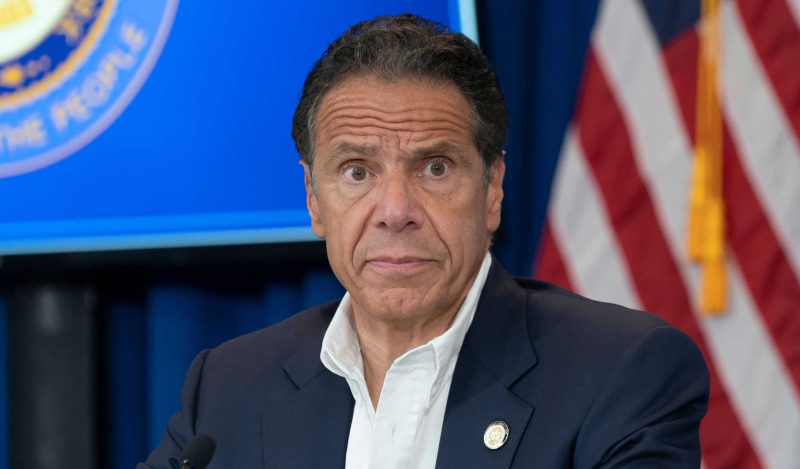
BY
Oh joy, another book by a hero of lockdowns! This time it is from Andrew Cuomo, who rode the disease-panic wave to the heights during the confusion of Spring 2020 before falling to the depths a year later. The adoring crowds, the fawning media, the enthralled masses all went away in a seeming flash, entirely due to some alleged untoward romantic gestures about which some complained.
Cuomo accomplished the deed and then was thrown to the dogs. He went from angel to devil practically overnight. One day he was saving New York from Covid – surely he will soon be president! – and the next he was waking up with nothing to do but look over his royalty checks.
Let us see what he has to say in his memoir. The book was written when he was at the height of his fame, but then withdrawn by the publisher when he crashed to the ground. But as it happens, there are contracts and advances and royalties at stake, so here we are now: American Crisis: Leadership Lessons from the COVID-19 Pandemic. The tone is confident, aggressive, sure-footed, and completely wrong.
We know for sure that he will not admit to having abused his power, personally or politically. He will not say that he had any part in wrecking New York, its commercial culture, its citizens’ sense of self-worth, or its religious freedoms. He will nowhere say that he went too far. He will not admit that he was a craven media tool or that he followed the mania in order to position himself for higher office. He will say none of that, any more than the rest of them have said that.
What does he say? Well, the book is more self-effacing than I expected, even disarming. He tells a good story concerning his personal life and struggles. It seems even sincere, and readers can connect with his professional rise then fall then rise again…and his subsequent fall again. His ideology is on display to the max: a progressive who believes strongly in government in its ideal but is always disappointed in its practice.
But the book is also strange for what it takes for granted, namely that locking down is the proper path to deal with infectious disease. Viruses in all times and places arrive, infect some portion of the population depending on prevalence, bear responsibility for the death of others, and eventually become endemic, which is to say, something we live with. This one was no different in any of its properties. What made this one different was its politicization and the casual but universally held view that life itself had to be fundamentally disrupted by government because of it.
Cuomo himself sneaks this presumption in from the start:
An airborne virus was one of the nightmare scenarios envisioned as a terrorist plot. It is easy to create chaos and overwhelm society with fear when people are afraid to breathe the air. There would be no good news with this virus and no good outcome. Schools and businesses would be closed. The economy would suffer. People would die. Nothing we could do would be enough. There was no possibility for victory, and even FDR and Churchill had at least the possibility of a successful outcome.
Really? No good outcome at all? Failure was baked in? Also, what is this passing mention of schools and businesses being forced to close? That did not happen in South Dakota, Sweden, Nicaragua, or Belarus. Why this concession to massive coercion when such had never been done in past pandemics? Where does this come from? And why did the governor just toss that in there? Why did he never rethink in the midst of his most egregious actions?
Keep in mind that he put this book to bed in the fall of 2020, just before his resignation following his call to open up New York. Here he writes that he defeated the virus. “New York State, a microcosm of the nation, has shown a path forward. We have seen government mobilize to handle the crisis. We have seen Americans come together in a sense of unity to do the impossible. We have seen how the virus is confronted and defeated.”
Remarkable. Consider the following two charts.


What these charts show is what one might have expected from any new virus of this sort with this risk profile. It killed. Then it infected more. Then 99.8% of those infected shook it off and obtained an upgraded immune system, no thanks to the vaccine that stopped neither infection nor spread. Then life got back to normal. Every bit of this trajectory was easily predictable regardless of what government did or did not do.
The virus did not need Cuomo to battle it: the human immune system does the hard work and governments are mere spectators. Public health knew that for decades until suddenly they did not. The temptation to be a hero was too great for vast numbers of people holding public office, Cuomo among them.
What government did was wreck much more than was necessary in the name of doing something. What’s worse is that the things government did reversed the higher-level knowledge that the one group that needed protection from the virus was the vulnerable population, in this case, the elderly and infirm.
Cuomo, on the other hand, signed an order, replicated in many other states, to force nursing homes to accept Covid patients in the extra rooms. No choice. They had to. This led to tens of thousands of unnecessary deaths. More on that in a moment.
On lockdowns, Cuomo simply bakes into the prose the idea that they had to happen. They began in New Rochelle, NY.
“No one was ready to accept that they needed to change how they were living…. As we saw in Westchester that day, local parochial concerns would butt up against major, wide-ranging changes that had to occur in order to combat the virus. As we were instituting this lockdown on New Rochelle, one Democratic assemblywoman who represented Westchester came to my office demanding a meeting; then she simply sat in the second row at a press conference and scowled at me.”
And that’s it: lockdown is the whole scheme. He never doubts it, never even argues for it.
The day after our first COVID case, the legislature passed the law giving the governor emergency powers to handle the crisis. If the legislature had not passed the law, I would not have had the power to do what I would soon do. There would be no executive order closing businesses or schools, no order requiring masks or social distancing. … The law was smart, and it has proven successful.
Now, let’s just jump ahead to the great nursing home scandal. I was curious what Cuomo had to say. I will just quote him.
By early spring, Republicans needed an offense to distract from the narrative of their botched federal response—and they needed it badly. So they decided to attack Democratic governors and blame them for nursing home deaths…. The Trump forces had a simple line: “Thousands died in nursing homes.” It was true. But they needed to add a conspiracy, which was that they died because of a bad state policy that “mandated and directed” that the nursing homes accept COVID-positive people, and these COVID-positive people were the cause of the spread of the disease in the nursing homes. It was a lie. New York State never demanded or directed that any nursing home accept a COVID-positive patient.”
That’s fascinating because I’m almost sure that I saw such an order. I look at the New York State website and it has been taken down. I found it on the Internet Archive. It is on New York State letterhead.

It reads as follows:
COVID-19 has been detected in multiple communities throughout New York State. There is an urgent need to expand hospital capacity in New York State to be able to meet the demand for patients with COVID-19 requiring acute care. As a result, this directive is being issued to clarify expectations for nursing homes (NHs) receiving residents returning from hospitalization and for NHs accepting new admissions…. No resident shall be denied re-admission or admission to the NH solely based on a confirmed or suspected diagnosis of COVID-19. NHs are prohibited from requiring a hospitalized resident who is determined medically stable to be tested for COVID-19 prior to admission or readmission.
Oh. So it wasn’t a lie after all. And anyone can check this. Read the above. That certainly sounds like New York State directed nursing homes to accept Covid-positive patients. Denying that he did this amounts to pettifoggery over terms. The import was perfectly obvious. Why not just admit that he made a mistake?
I’m tempted to end this review there. But it actually gets worse. At one point, Cuomo writes that his heroics actually worked and that this is obvious. He is or was a completely unrepentant lockdower:
States like Arizona, Florida, and Texas that followed Trump’s demands to reopen quickly saw increased infection rates and needed to close their economies back down—reopening only to re-close. As a result, the financial markets were distressed with the volatility in these states. This stood in stark contrast to New York, where as of this writing 75 percent of our economy is open and our infection rate has been consistently 1 percent or below for nearly three months and among the lowest in the nation. It is incomprehensible that people still support Trump’s disproven theories. The states that most closely followed Trump’s “guidance” were doing the worst.
Look again at the charts above. The virus was only getting started when he turned in this text. He wrote those words during a seasonal downturn. Infections were still coming and coming in wave after wave. New York fared as bad as any state, certainly far worse than Florida or other open states. Meanwhile, New York drove residents out, and the state is in far worse economic condition than most.
And yet here he is taking credit for an intelligent and hands-on approach that wrecked the lives, liberties, and property of residents of the state, who, to this day, have yet to regain their composure. He did this. He became famous and beloved for it. And to this day, based on this book, he still believes that he was right.
Cuomo can’t imagine – truly – that he might have done anything wrong except perhaps communicated more clearly. In truth, governments could have forced everyone to paint their faces bright blue and wear frying pans for shoes and it would not have changed the pandemic outcome from what it was going to be. The virus never cared. But don’t tell that to Cuomo: the upshot of his book is that he saved New York. Nothing will convince him otherwise.
In short, don’t read this book looking for an apology. These politicians all panicked, as John Tamny argued from the beginning. No matter the policy, the pandemic was going to recede into memory, as it has. No matter how badly this class of politicians performed, somehow they all managed to claim to have done the right thing, and to earn royalties on their ghost-written accounts of their genius.
Even given everything, the book is not all bad. His personal stories are self effacing and engaging. He is a real person with a real life, with choices to make, risks to take, difficulties to face, family struggles, and so on. He was free to engage life to its fullest in 2020, unlike the 20 million people he locked down and robbed of all such opportunities. He believed that it was the right thing to do because Fauci was saying that it was. It was not in fact the right thing to do.
I would like to end by echoing Cuomo’s tribute to those who were shoved out in front to face the virus while the laptoppers languished at home in hiding. He is exactly right to say the following:
The heroes who made this happen were the working families of New York. When we were in our moment of need, we called on the blue-collar New Yorkers to show up for everyone. We needed them to come to work and risk their health so that so many of us could stay safely at home. These are the people who have received the fewest rewards from society but from whom we now asked the most.
These are the people who would have been most justified in refusing our call. They were not the rich and the well-off. They were not the highly paid. They have not been given anything more than they deserved. They had no obligation to risk their health and the health of their families. But they did it simply because “it was the right thing to do.” But for some that is enough. For some that is everything.
These heroes are the people who live in places like Queens, where I grew up. These are the people working hard to better themselves and their families. These are parents concerned first and foremost with protecting their families, but who still showed up every day as nurses, National Guard members, train operators, bus drivers, hospital workers, police officers, grocery store employees, food delivery drivers. They are Puerto Ricans, Haitians, African Americans, Dominicans, Asians, Guatemalans. These are the immigrants who love America, who make America, and who will fight for it.
These are the heroes of this battle. When COVID began, I felt it was unfair to call on them to carry such a heavy burden. I feared I would put them in harm’s way. But we didn’t have an option if society was to function. We needed food, hospitals, and electricity to stay alive.
All through this difficult endeavor there was never a moment when these people refused to show up or leveraged more benefits for themselves. At the beginning of a battle no one knows who will actually survive. Courage is determined by the willingness to enter the field. No one knew that when we started, the infection rate among our essential workers would be no higher than the general community infection rate. They have my undying admiration and the gratitude of every true New Yorker.
We can only say to that: Amen! These people do deserve deep gratitude. They also deserve a government that will never again conscript them to go to work for the professional class in order that the well-to-do can keep clean and free of pathogens. That the people Cuomo rightly celebrates were so treated is a violation of the social contract, and now have every reason to be bitter. And don’t you love the comment that “We needed food, hospitals, and electricity to stay alive?” Who exactly is “we” here?
We know. We know all too well.
Brownstone Institute
FDA Exposed: Hundreds of Drugs Approved without Proof They Work

From the Brownstone Institute
By
The US Food and Drug Administration (FDA) has approved hundreds of drugs without proof that they work—and in some cases, despite evidence that they cause harm.
That’s the finding of a blistering two-year investigation by medical journalists Jeanne Lenzer and Shannon Brownlee, published by The Lever.
Reviewing more than 400 drug approvals between 2013 and 2022, the authors found the agency repeatedly ignored its own scientific standards.
One expert put it bluntly—the FDA’s threshold for evidence “can’t go any lower because it’s already in the dirt.”
A System Built on Weak Evidence
The findings were damning—73% of drugs approved by the FDA during the study period failed to meet all four basic criteria for demonstrating “substantial evidence” of effectiveness.
Those four criteria—presence of a control group, replication in two well-conducted trials, blinding of participants and investigators, and the use of clinical endpoints like symptom relief or extended survival—are supposed to be the bedrock of drug evaluation.
Yet only 28% of drugs met all four criteria—40 drugs met none.
These aren’t obscure technicalities—they are the most basic safeguards to protect patients from ineffective or dangerous treatments.
But under political and industry pressure, the FDA has increasingly abandoned them in favour of speed and so-called “regulatory flexibility.”
Since the early 1990s, the agency has relied heavily on expedited pathways that fast-track drugs to market.
In theory, this balances urgency with scientific rigour. In practice, it has flipped the process. Companies can now get drugs approved before proving that they work, with the promise of follow-up trials later.
But, as Lenzer and Brownlee revealed, “Nearly half of the required follow-up studies are never completed—and those that are often fail to show the drugs work, even while they remain on the market.”
“This represents a seismic shift in FDA regulation that has been quietly accomplished with virtually no awareness by doctors or the public,” they added.
More than half the approvals examined relied on preliminary data—not solid evidence that patients lived longer, felt better, or functioned more effectively.
And even when follow-up studies are conducted, many rely on the same flawed surrogate measures rather than hard clinical outcomes.
The result: a regulatory system where the FDA no longer acts as a gatekeeper—but as a passive observer.
Cancer Drugs: High Stakes, Low Standards
Nowhere is this failure more visible than in oncology.
Only 3 out of 123 cancer drugs approved between 2013 and 2022 met all four of the FDA’s basic scientific standards.
Most—81%—were approved based on surrogate endpoints like tumour shrinkage, without any evidence that they improved survival or quality of life.
Take Copiktra, for example—a drug approved in 2018 for blood cancers. The FDA gave it the green light based on improved “progression-free survival,” a measure of how long a tumour stays stable.
But a review of post-marketing data showed that patients taking Copiktra died 11 months earlier than those on a comparator drug.
It took six years after those studies showed the drug reduced patients’ survival for the FDA to warn the public that Copiktra should not be used as a first- or second-line treatment for certain types of leukaemia and lymphoma, citing “an increased risk of treatment-related mortality.”
Elmiron: Ineffective, Dangerous—And Still on the Market
Another striking case is Elmiron, approved in 1996 for interstitial cystitis—a painful bladder condition.
The FDA authorized it based on “close to zero data,” on the condition that the company conduct a follow-up study to determine whether it actually worked.
That study wasn’t completed for 18 years—and when it was, it showed Elmiron was no better than placebo.
In the meantime, hundreds of patients suffered vision loss or blindness. Others were hospitalized with colitis. Some died.
Yet Elmiron is still on the market today. Doctors continue to prescribe it.
“Hundreds of thousands of patients have been exposed to the drug, and the American Urological Association lists it as the only FDA-approved medication for interstitial cystitis,” Lenzer and Brownlee reported.
“Dangling Approvals” and Regulatory Paralysis
The FDA even has a term—”dangling approvals”—for drugs that remain on the market despite failed or missing follow-up trials.
One notorious case is Avastin, approved in 2008 for metastatic breast cancer.
It was fast-tracked, again, based on ‘progression-free survival.’ But after five clinical trials showed no improvement in overall survival—and raised serious safety concerns—the FDA moved to revoke its approval for metastatic breast cancer.
The backlash was intense.
Drug companies and patient advocacy groups launched a campaign to keep Avastin on the market. FDA staff received violent threats. Police were posted outside the agency’s building.
The fallout was so severe that for more than two decades afterwards, the FDA did not initiate another involuntary drug withdrawal in the face of industry opposition.
Billions Wasted, Thousands Harmed
Between 2018 and 2021, US taxpayers—through Medicare and Medicaid—paid $18 billion for drugs approved under the condition that follow-up studies would be conducted. Many never were.
The cost in lives is even higher.
A 2015 study found that 86% of cancer drugs approved between 2008 and 2012 based on surrogate outcomes showed no evidence that they helped patients live longer.
An estimated 128,000 Americans die each year from the effects of properly prescribed medications—excluding opioid overdoses. That’s more than all deaths from illegal drugs combined.
A 2024 analysis by Danish physician Peter Gøtzsche found that adverse effects from prescription medicines now rank among the top three causes of death globally.
Doctors Misled by the Drug Labels
Despite the scale of the problem, most patients—and most doctors—have no idea.
A 2016 survey published in JAMA asked practising physicians a simple question—what does FDA approval actually mean?
Only 6% got it right.
The rest assumed that it meant the drug had shown clear, clinically meaningful benefits—such as helping patients live longer or feel better—and that the data was statistically sound.
But the FDA requires none of that.
Drugs can be approved based on a single small study, a surrogate endpoint, or marginal statistical findings. Labels are often based on limited data, yet many doctors take them at face value.
Harvard researcher Aaron Kesselheim, who led the survey, said the results were “disappointing, but not entirely surprising,” noting that few doctors are taught about how the FDA’s regulatory process actually works.
Instead, physicians often rely on labels, marketing, or assumptions—believing that if the FDA has authorized a drug, it must be both safe and effective.
But as The Lever investigation shows, that is not a safe assumption.
And without that knowledge, even well-meaning physicians may prescribe drugs that do little good—and cause real harm.
Who Is the FDA Working for?
In interviews with more than 100 experts, patients, and former regulators, Lenzer and Brownlee found widespread concern that the FDA has lost its way.
Many pointed to the agency’s dependence on industry money. A BMJ investigation in 2022 found that user fees now fund two-thirds of the FDA’s drug review budget—raising serious questions about independence.

Yale physician and regulatory expert Reshma Ramachandran said the system is in urgent need of reform.
“We need an agency that’s independent from the industry it regulates and that uses high-quality science to assess the safety and efficacy of new drugs,” she told The Lever. “Without that, we might as well go back to the days of snake oil and patent medicines.”
For now, patients remain unwitting participants in a vast, unspoken experiment—taking drugs that may never have been properly tested, trusting a regulator that too often fails to protect them.
And as Lenzer and Brownlee conclude, that trust is increasingly misplaced.
- Investigative report by Jeanne Lenzer and Shannon Brownlee at The Lever [link]
- Searchable public drug approval database [link]
- See my talk: Failure of Drug Regulation: Declining standards and institutional corruption
Republished from the author’s Substack
Brownstone Institute
Anthony Fauci Gets Demolished by White House in New Covid Update
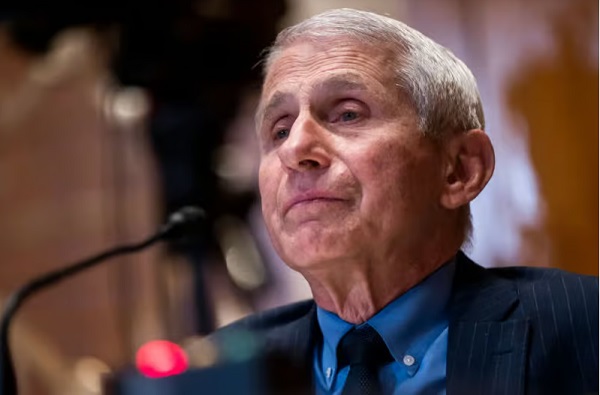
From the Brownstone Institute
By
Anthony Fauci must be furious.
He spent years proudly being the public face of the country’s response to the Covid-19 pandemic. He did, however, flip-flop on almost every major issue, seamlessly managing to shift his guidance based on current political whims and an enormous desire to coerce behavior.
Nowhere was this more obvious than his dictates on masks. If you recall, in February 2020, Fauci infamously stated on 60 Minutes that masks didn’t work. That they didn’t provide the protection people thought they did, there were gaps in the fit, and wearing masks could actually make things worse by encouraging wearers to touch their face.
Just a few months later, he did a 180, then backtracked by making up a post-hoc justification for his initial remarks. Laughably, Fauci said that he recommended against masks to protect supply for healthcare workers, as if hospitals would ever buy cloth masks on Amazon like the general public.
Later in interviews, he guaranteed that cities or states that listened to his advice would fare better than those that didn’t. Masks would limit Covid transmission so effectively, he believed, that it would be immediately obvious which states had mandates and which didn’t. It was obvious, but not in the way he expected.

And now, finally, after years of being proven wrong, the White House has officially and thoroughly rebuked Fauci in every conceivable way.
White House Covid Page Points Out Fauci’s Duplicitous Guidance
A new White House official page points out, in detail, exactly where Fauci and the public health expert class went wrong on Covid.
It starts by laying out the case for the lab-leak origin of the coronavirus, with explanations of how Fauci and his partners misled the public by obscuring information and evidence. How they used the “FOIA lady” to hide emails, used private communications to avoid scrutiny, and downplayed the conduct of EcoHealth Alliance because they helped fund it.
They roast the World Health Organization for caving to China and attempting to broaden its powers in the aftermath of “abject failure.”
“The WHO’s response to the COVID-19 pandemic was an abject failure because it caved to pressure from the Chinese Communist Party and placed China’s political interests ahead of its international duties. Further, the WHO’s newest effort to solve the problems exacerbated by the COVID-19 pandemic — via a “Pandemic Treaty” — may harm the United States,” the site reads.
Social distancing is criticized, correctly pointing out that Fauci testified that there was no scientific data or evidence to support their specific recommendations.
“The ‘6 feet apart’ social distancing recommendation — which shut down schools and small business across the country — was arbitrary and not based on science. During closed door testimony, Dr. Fauci testified that the guidance ‘sort of just appeared.’”
There’s another section demolishing the extended lockdowns that came into effect in blue states like California, Illinois, and New York. Even the initial lockdown, the “15 Days to Slow the Spread,” was a poorly reasoned policy that had no chance of working; extended closures were immensely harmful with no demonstrable benefit.
“Prolonged lockdowns caused immeasurable harm to not only the American economy, but also to the mental and physical health of Americans, with a particularly negative effect on younger citizens. Rather than prioritizing the protection of the most vulnerable populations, federal and state government policies forced millions of Americans to forgo crucial elements of a healthy and financially sound life,” it says.
Then there’s the good stuff: mask mandates. While there’s plenty more detail that could be added, it’s immensely rewarding to see, finally, the truth on an official White House website. Masks don’t work. There’s no evidence supporting mandates, and public health, especially Fauci, flip-flopped without supporting data.
“There was no conclusive evidence that masks effectively protected Americans from COVID-19. Public health officials flipped-flopped on the efficacy of masks without providing Americans scientific data — causing a massive uptick in public distrust.”
This is inarguably true. There were no new studies or data justifying the flip-flop, just wishful thinking and guessing based on results in Asia. It was an inexcusable, world-changing policy that had no basis in evidence, but was treated as equivalent to gospel truth by a willing media and left-wing politicians.
Over time, the CDC and Fauci relied on ridiculous “studies” that were quickly debunked, anecdotes, and ever-shifting goal posts. Wear one cloth mask turned to wear a surgical mask. That turned into “wear two masks,” then wear an N95, then wear two N95s.
All the while ignoring that jurisdictions that tried “high-quality” mask mandates also failed in spectacular fashion.

And that the only high-quality evidence review on masking confirmed no masks worked, even N95s, to prevent Covid transmission, as well as hearing that the CDC knew masks didn’t work anyway.
The website ends with a complete and thorough rebuke of the public health establishment and the Biden administration’s disastrous efforts to censor those who disagreed.
“Public health officials often mislead the American people through conflicting messaging, knee-jerk reactions, and a lack of transparency. Most egregiously, the federal government demonized alternative treatments and disfavored narratives, such as the lab-leak theory, in a shameful effort to coerce and control the American people’s health decisions.
When those efforts failed, the Biden Administration resorted to ‘outright censorship—coercing and colluding with the world’s largest social media companies to censor all COVID-19-related dissent.’”
About time these truths are acknowledged in a public, authoritative manner. Masks don’t work. Lockdowns don’t work. Fauci lied and helped cover up damning evidence.
If only this website had been available years ago.
Though, of course, knowing the media’s political beliefs, they’d have ignored it then, too.
Republished from the author’s Substack
-

 Business2 days ago
Business2 days agoOttawa Funded the China Ferry Deal—Then Pretended to Oppose It
-

 COVID-192 days ago
COVID-192 days agoNew Peer-Reviewed Study Affirms COVID Vaccines Reduce Fertility
-

 MAiD2 days ago
MAiD2 days agoCanada’s euthanasia regime is not health care, but a death machine for the unwanted
-

 Alberta2 days ago
Alberta2 days agoThe permanent CO2 storage site at the end of the Alberta Carbon Trunk Line is just getting started
-
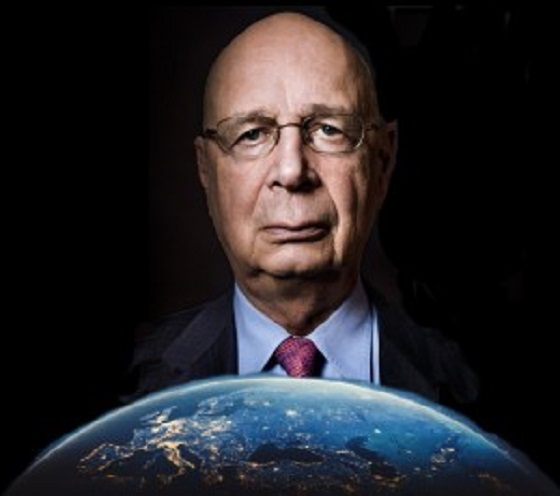
 Business1 day ago
Business1 day agoWorld Economic Forum Aims to Repair Relations with Schwab
-

 Alberta2 days ago
Alberta2 days agoAlberta’s government is investing $5 million to help launch the world’s first direct air capture centre at Innisfail
-
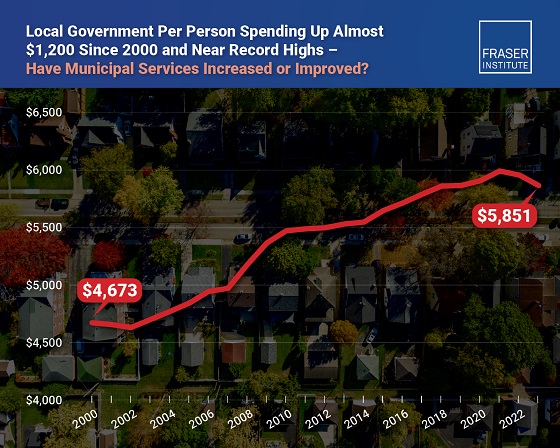
 Business2 days ago
Business2 days agoMunicipal government per-person spending in Canada hit near record levels
-
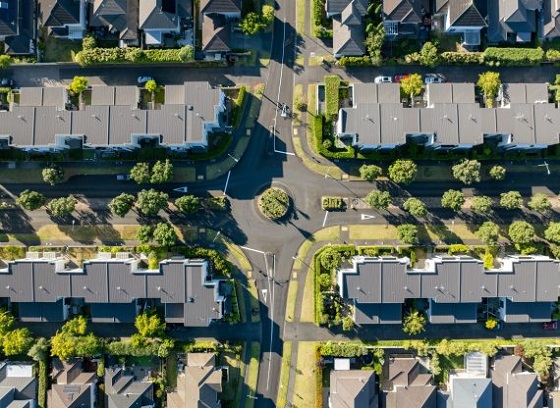
 Business1 day ago
Business1 day agoA new federal bureaucracy will not deliver the affordable housing Canadians need










